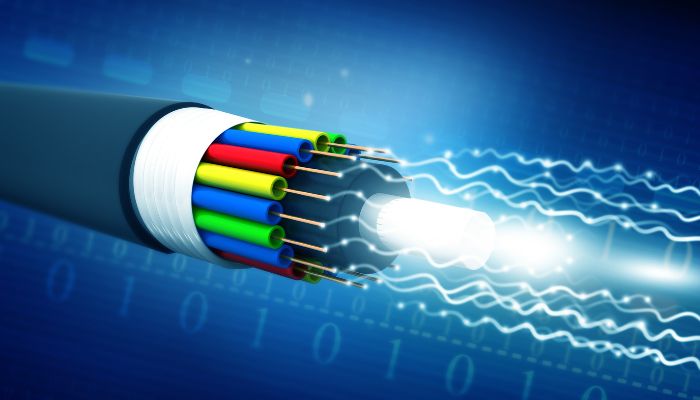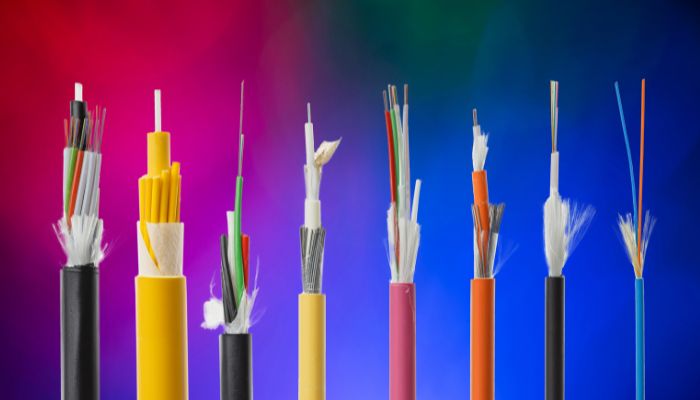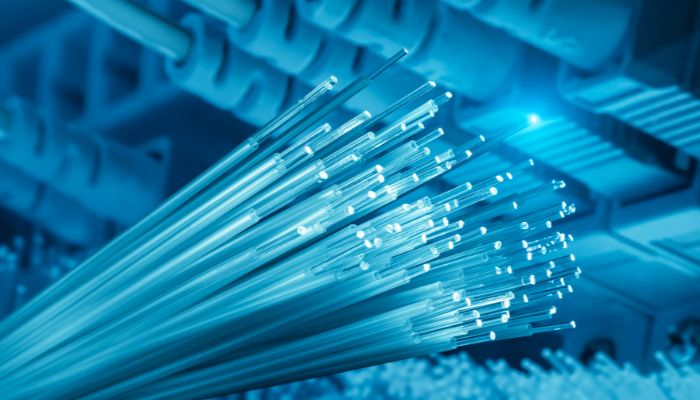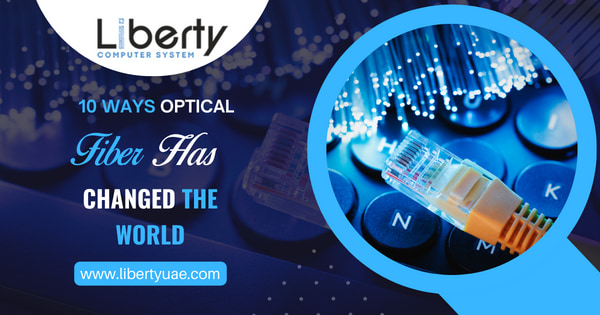In a rapidly connected world, the part of technology and communication infrastructure cannot be overstated. One of the most transformative evolutions in current decades has been the widespread adoption of optical fiber technology.
Optical fiber, with its ability to transmit data at the speed of light and over long distances, has revolutionized various aspects of our lives. Structured cabling companies in Dubai are also using this technology for safe networking.
In this article, we’ll explore ten ways in which optical fiber has transformed the world.
What Is Optical Fiber Technology?

Optical fiber technology, or fiber optics, has transformed the form we share and transmit data. It utilizes thin, transparent fibers to transmit light signals, enabling high-speed and long-distance data transfer.
Key advantages include minimal signal loss, exemption to electromagnetic interference, and improved protection. This technology underpins our internet, telecommunications, and various industries, making it a vital part of our interconnected world.
How Does An Optical Fiber Cable Work?

An optical fiber cable works in the direction of full internal reflection, utilizing the unique properties of light to transmit data over long distances. Here’s a simplified explanation of how it works –
- Core and Cladding – An optical fiber cable contains two major parts: the core and the cladding. The core is a thin strand of transparent glass or plastic through which light travels, and it has a higher refractive index compared to the cladding. The cladding surrounds the core and has a slightly lower refractive index.
- Total Internal Reflection – When light enters the core of the optical fiber at a specific angle, it undergoes a phenomenon called total internal reflection. This means that instead of escaping through the cladding, the light rays are reflected back into the core because of the distinction in refractive indices between the core and cladding.
- Continuous Reflection – The light signal, typically generated by a laser or LED at one end of the fiber, continues to bounce off the core-cladding interface as it travels along the length of the fiber. This continuous reflection assures that the light stays contained within the core.
- Signal Transmission – Information, in the form of data or voice, is encoded onto the light signal by varying its intensity or frequency. As the light signal propagates through the core, these variations are carried along with it.
- Receiving End – At the other corner of the optical fiber, there is a photosensitive detector, such as a photodiode or photodetector. This detector converts the received light signal back into electrical signals, which can then be processed to extract the original information.
Key Points To Note:
- High-Speed Data Transmission – Optical fiber cables can transmit data at extremely high speeds, as the light signals travel at the speed of light.
- Minimal Signal Loss – Optical fibers experience very low signal loss over long distances, allowing for data transmission over hundreds of kilometers without significant degradation.
- Immunity to Electromagnetic Interference (EMI) – Unlike copper cables, optical fibers are not susceptible to electromagnetic interference, making them perfect for usage in conditions with high EMI, such as industrial settings.
- Secure Communication – Optical fiber cables are difficult to tap or intercept, enhancing the security of data transmission.
Understand The Ways Optical Fiber Has Changed The World:

- High-Speed Internet Access – Optical fiber has paved the path for high-speed Internet connections. Unlike traditional copper wires, which have limited bandwidth, optical fiber can transmit vast amounts of data at incredible speeds. This technology has allowed us to stream high-definition videos, participate in video conferences, and download large files in seconds, revolutionizing how we access and share information online.
- Telecommunications and Phone Services – Optical fiber is the backbone of modern telecommunications networks. It enables reliable, high-quality voice calls and supports the infrastructure for mobile networks. Fiber-optic cables have significantly increased the capacity and efficiency of our global communication systems.
- Data Centers and Cloud Computing – The exponential growth of data and the demand for cloud-based services have driven the need for faster and more reliable data transmission. Optical fiber connections within data centers and across the internet backbone ensure that our data is accessible and secure, powering the digital services we rely on daily.
- Medical Advancements – Optical fibers have transformed the field of medicine by facilitating minimally intrusive techniques. Endoscopes and other medical imaging devices that use optical fibers allow doctors to diagnose and treat patients more effectively while reducing recovery times and discomfort.
- Entertainment and Streaming Services – Without optical fiber, the seamless streaming of movies, TV shows, and live sports events would not be possible. It has revolutionized our entertainment experiences by delivering high-definition content to our screens without buffering or interruptions.
- Global Financial Transactions – In the world of finance, split-second decisions and rapid data transmission are critical. Optical fiber networks connect financial centers worldwide, facilitating high-frequency trading and ensuring the swift transfer of funds and information securely.
- Scientific Research and Discoveries – Optical fibers have enabled breakthroughs in scientific research by providing precise instruments for data collection and analysis. They are utilized in diverse scientific areas, comprising astronomy, physics, and environmental monitoring.
- Improved Security Systems – Optical fiber technology has enhanced security systems, allowing for faster and more reliable data transfer in surveillance cameras, access control systems, and alarm systems. This contributes to better safety and security in public spaces and private properties.
- Smart Cities and IoT Connectivity – Optical fiber is the infrastructure that underpins smart city industries. It enables the real-time exchange of data between interconnected devices, making our cities more effective, bearable, and responsive to the demands of citizens.
- Education and E-Learning – The COVID-19 pandemic revved the transition towards online education. Optical fiber played a crucial role in ensuring students and educators could connect seamlessly for remote learning, bringing quality education to students worldwide.
Conclusion
Optical fiber technology has altered the method we share, access information, and conduct business. Its effect on different industries and elements of our everyday lives is immeasurable.
As technology continues to grow, optical fiber will stay at the forefront, building the future of connectivity and innovation. So connect with the reputed networking companies in Dubai and make your move toward the optical fiber world.




.png)


